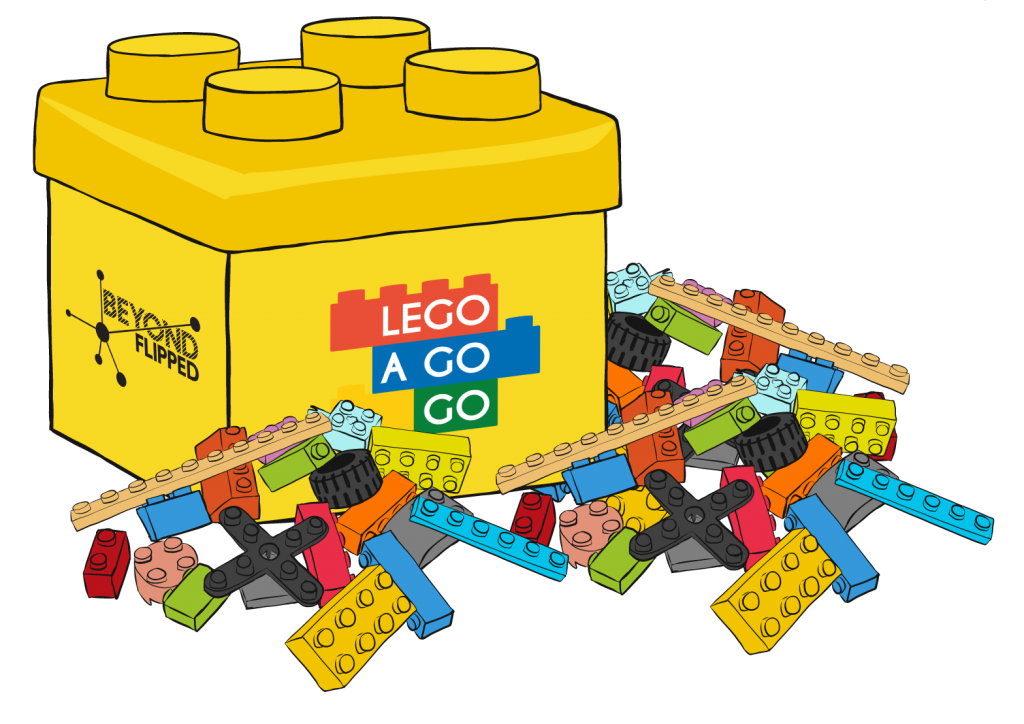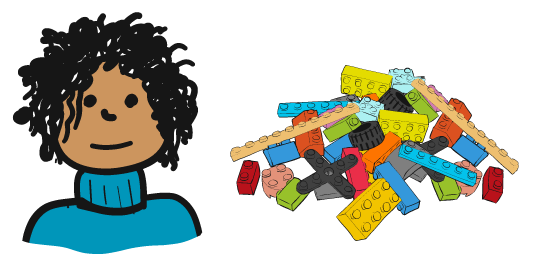LEGO-A-GO-GO
What is LEGO-A-GO-GO?
LEGO-A-GO-GO (LAGG) is an interactive and engaging Beyond Flipped method for problem solving; regardless of discipline, learning level, or topic area. Application of the method results in a rich environment that facilitates a deep learning experience. Utilising the L·E·A·R·N framework, LAGG creates a learning model that delivers quality by placing the student at the centre of the learning experience.
LAGG was developed as a light-touch version of the LEGO® SERIOUS PLAY® methodology, used by businesses and organisations around the globe to develop innovative ideas and improve businesses performance. It draws on the power of metaphorical modelling to provide peer-learning environments where students explore and present ideas, learning from each other in the process.
Are you already using LEGO in teaching and learning?
We’ve launched our Collections website to help share models and build a creative community of practice. Simply upload your model, add a description, and attach an image license.
What’s the activity?
Group workshop
How many is it for?
5 to 100 students
How long does it take?
30 minutes to 3 hours
Overview
Brief Introduction
Approx. 10 minutes.
Provide the class with an introduction for the use of LEGO® as a learning and teaching resource. You can use the following explanations to describe the concept to participants within their session:
1. What Can it do?
Lego can be utilised as an exploration and delivery method for conceptual learning through a combination of models and narratives. The use of LEGO® facilitates deep learning through interactive and immersive activities intended to support self-organised learning environments.
“When playing with LEGO you are not a consumer; you are a producer.”
Olafur Eliasson, Danish-Icelandic Artist
2. How Does it do it?
To best describe how the use of LEGO® can improve learning and teach you can refer to Donna Denio from Team Dynamics Boston’s excellent explanation:
-
100 PERCENT PARTICIPATION GUARANTEED – The highly structured LSP process design guarantees that every person in the workshop participates equally.
-
GIVES SHY PEOPLE CONFIDENCE – Having time to think during the building process, a model for reference, and a specific time to speak builds confidence.
-
FRESH PERSPECTIVE GUARANTEED – The number of options and solutions generated and the fact that each model is an original expression (instead of building on an idea that has already been voiced) guarantees that fresh perspective emerge.
-
GETS TO CORE BELIEFS AND VALUES – You learn everyone’s REAL fears, areas of disagreement, hopes and dreams (instead of the sanitised, politically correct business-speak or lips-sealed-shut silence we have come to accept).
-
AUTHENTIC EXPRESSION (NO LIES) – It is difficult to misrepresent or inflate your reality when using LSP to express ideas.
-
CREATES A COMMON LANGUAGE – Professional training and cultural norms inform each person’s verbal expression so words can mean different things to different people. Some words or phrases are only understood by people with similar professional training. The LSP models each person builds create a common language that can be seen, questioned and understood without challenging the model builder.
-
CLARIFIES COMPLEXITY – The process supports creating a landscape which makes connections and relationships among and between components clear, concrete, and easy to understand.
-
GROUP ALIGNMENT GUARANTEED – The highly structured LSP process in combination with skilled facilitation assures that every person’s core ideas, values and concerns are incorporated in the final solutions.
-
MEMORABLE RESULTS – It has been said that a picture is worth a thousand words. Three-dimensional LSP models, stored in your memory as pictures of recognisable objects (such as a gear, globe or tiger), trigger access to the workshop’s key insights.
-
SAVES TIME – In post-workshop surveys and interviews, participants agree that LSP workshops accelerate trust and consensus building at two-to-three times the speed of other traditional methods for group decision-making or strategy development.
Top Ten Reasons to use LEGO Serious Play
3. What Will it Achieve?
Through the medium of play, participants feel more comfortable in taking risks and exploring new concepts and ideas through employment of kinesthetic learning.
Generating solutions through 3D modelling enables creative centres within the brain to be engaged in ways hitherto under-utilised by traditional learning and teaching. Through the exploration of ideas in three dimensions, a richer learning experience can be achieved. The method also expands the depth of participant engagement by removing unnecessary rules, conventions and creative restrictions implied by traditional two-dimensional practices and literal representations.
Bring in the Bricks
As the introduction session draws to a close, now is the time to introduce your LEGO® boxes into the session. Place them around the room, ready for participants to use.
Note: It is important to do this at the end of the introduction – not the beginning – so as not to introduce a distraction into the session.
LOCATE
5 minutes.
Pose up to three discipline-specific questions to the group, based upon the intended learning outcomes. Participants will then explore the ascribed problem domain through creation of metaphorical LEGO® models and associated narratives.
Encourage Self-organisation
We recommend allowing participants to establish smaller groups themselves, rather than setting these outside of their control. This will encourage the room to self-organise, further establishing their independence. If this does not produce adequate groups, then step in and arrange groups accordingly to prevent the presentations running over.
EVALUATE
30 minutes.
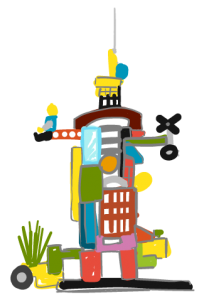 Task all groups and individuals to identify and utilise credible sources of information through online research. This research is designed to inform the development of the LEGO® models and associated narratives. This can be achieved through the use of a smartphone, tablet, laptop or any available desktop machines or written materials contained within the space.
Task all groups and individuals to identify and utilise credible sources of information through online research. This research is designed to inform the development of the LEGO® models and associated narratives. This can be achieved through the use of a smartphone, tablet, laptop or any available desktop machines or written materials contained within the space.
Instruct participants to generate models based upon their research into the aforementioned problem domains. If this is the first Lego-A-Go-Go session that the participants are taking part in then:
In the first instance, THE MODEL MUST BE METAPHORICAL, NOT LITERAL.
If this is their second session or more then we recommend giving participants the option to create either metaphorical or literal models, depending on which approach best suits their needs.
ARTICULATE
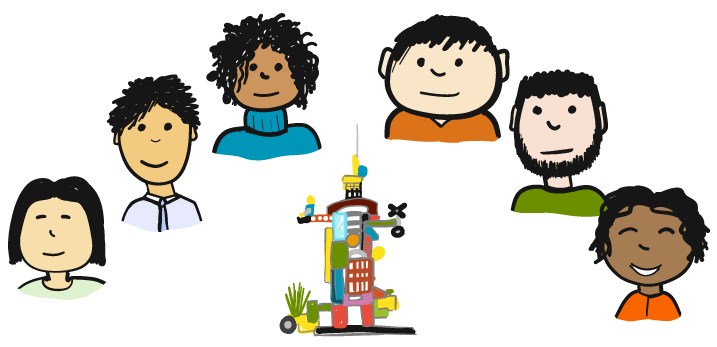 3 minutes per group/individual.
3 minutes per group/individual.
Participants generate narrative presentations based upon generated LEGO® models for delivery to peers. Staff should interject (where appropriate), and summarise, with course specific real-world examples, based upon participant’s presentations.
These interjections must be factual not theoretical!
The aim of this process is to add real-world context to the models generated, in order to highlight links to existing practices that directly relate to the concepts demonstrated by participants.
RE-EVALUATE
15 minutes.
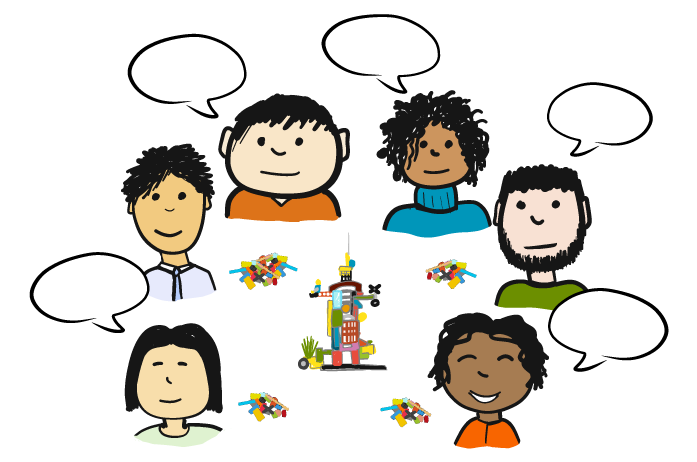 Allow everyone to spend a few minutes discussing all the groups’ ideas and concept models, selecting those most pertinent, and amalgamating them into a revised model of their own.
Allow everyone to spend a few minutes discussing all the groups’ ideas and concept models, selecting those most pertinent, and amalgamating them into a revised model of their own.
This will create an in-depth understanding of the self-organised learning environment, in addition to the initial question posed.
This creates a sharing economy within the class by:
-
Adding value to each group’s models (through inspiration within other groups)
-
Adding depth to each individual’s understanding (not only the problem domain, but also associated topics and concepts)
-
Raising awareness of the value of group collaboration for solution generation.
NATURALISE
3 minutes per group/individual.
Once groups have successfully completed the re-evaluation stage, they should present the revised narratives to their peers. Groups should demonstrate links between prior knowledge and new collective findings gained through this exercise. Optional: Record the final presentations, transforming resultant information into knowledge for adoption into future session delivery.
“In my class yesterday, I had 10 mins left and I pulled out the Lego you gifted and did a “quick & dirty” build and present with 20 master students. It went excellently and I got deep philosophical ideas from them…. from lego in 10 mins!!!! AWESOME!”
Dr Anh L.H. Tran
Senior Lecturer in Humanitarian Engineering
Useful Resources
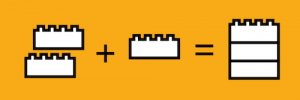
Printable Guide
This printable version of the LEGO-A-GO-GO guide provides all the steps you need to run a session of your own. Simply load it on your mobile device, or print it out, and off you go!

Cheat Sheet
Need some extra help introducing a LEGO-A-Go-Go session to your students? Feel free to use this cheat sheet of facts to help spark interest and excitement for your sessions.

Request Bricks
If you’re a staff member in the Coventry University Group and wishing to use LEGO in teaching and learning please get in touch. We have a variety of kits to suit your needs.

Slide Deck
You can use this template presentation to frame the activity with your students. Please email us to request the presentation in a different format.
All materials are licensed under Creative Commons CC BY-NC 4.0. You can repurpose these as you see fit, all we ask is that you credit us and don’t use them commercially.

